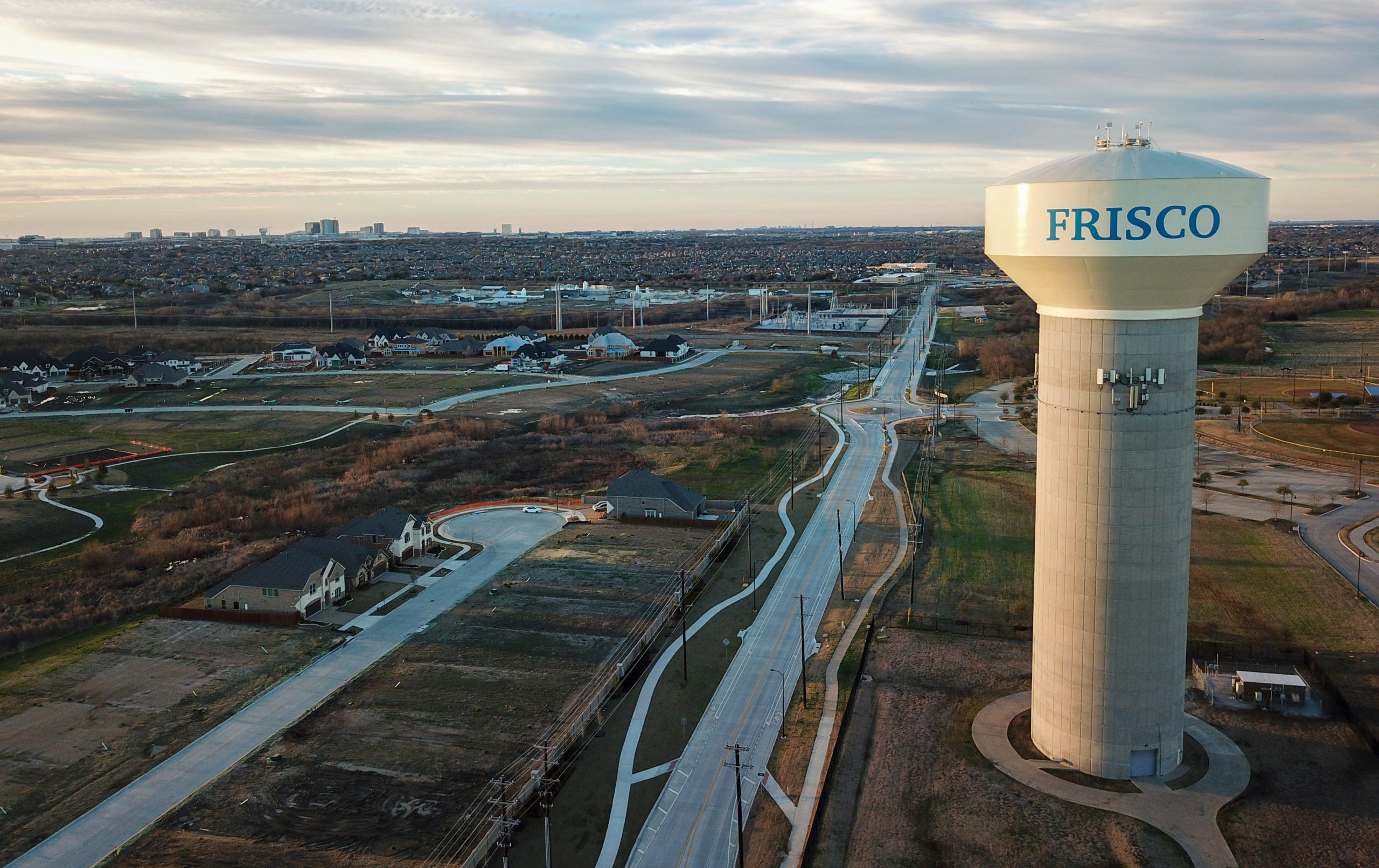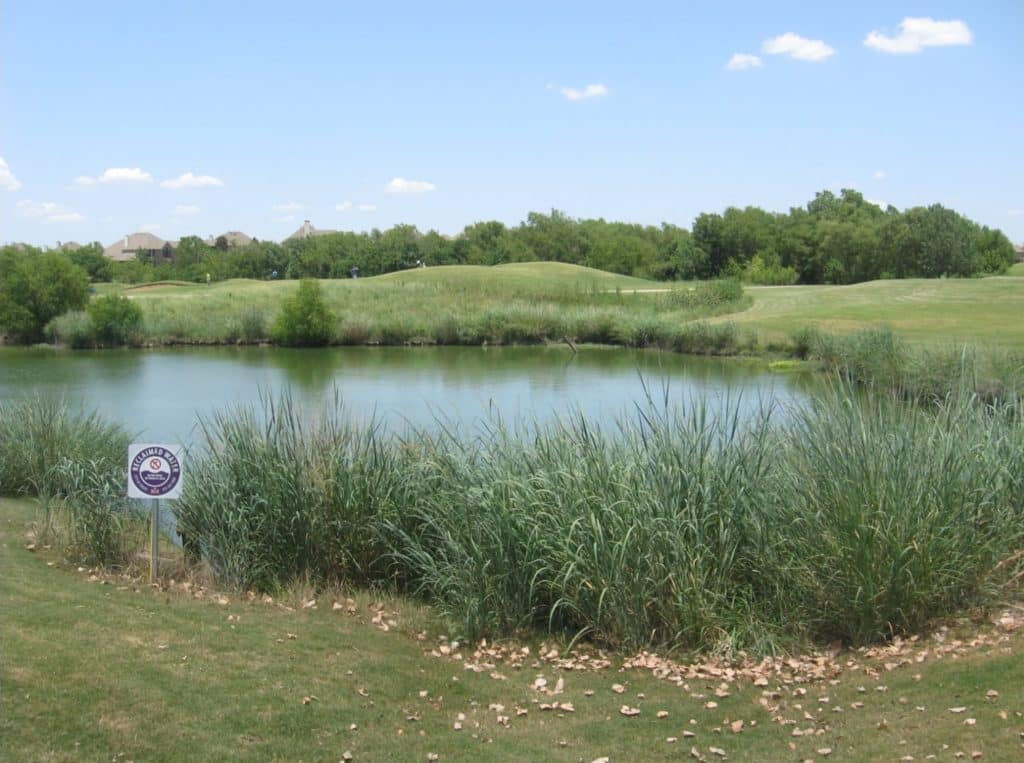Frisco Water: Big-Picture Planning to Absorb Big Growth
The City of Frisco has grown so large so quickly that the Freakonomics Radio podcast in early 2022 asked “How did a hayfield become one of America’s hottest cities?”
Years of strategic planning have enabled the City to absorb mega-projects such as the Dallas Cowboys’ world headquarters, the new Professional Golfers’ Association of America headquarters and Keurig Dr Pepper’s recently completed Texas corporate headquarters — along with the housing, schools and commercial development to serve a population that was less than 34,000 in 2000 and now exceeds 210,000.
Roadway, water, wastewater and reuse master planning developed and refined over the past 15 years have anchored the City’s infrastructure. Since 2004, Freese and Nichols has helped the City prepare and integrate their plans, assisting along the way with updates and revisions to accommodate changing demographics and unanticipated opportunities.

With a well-coordinated approach, the City has executed a $190 million capital improvement plan that has included, among other aspects, adding a wastewater treatment plant (then decommissioning one of three existing facilities), expanding water reuse from 1 to 21 MGD and extending or enlarging pipelines to connect new developments to the water, wastewater and reuse systems.

“That holistic approach has been successful,” said Jessica Brown, a Freese and Nichols Principal who leads the Water/Wastewater Master Planning Practice. “They’ve added thousands of people a year and haven’t lost a step. Everything hasn’t developed as they thought, but they’ve adapted because of the plans they’ve put in place and continue to update.”
Staying Nimble
Frisco leaders call the “North Platinum Corridor,” which runs along the Dallas North Tollway between SH 121 and U.S. 380, their urban spine, encompassing commercial, tourism and entertainment offerings. Game-changers for the City have included the Dallas Cowboys’ move of their practice facility and headquarters; arrival of the National Soccer Hall of Fame near Toyota Stadium, home to FC Dallas; relocation of the PGA HQ, which opened in 2022; and developments such as The Star, which hosts sports and entertainment events, and The Fields, a planned residential community as part of the PGA complex.
With each update, the water, wastewater and reuse master plans have based projections on the direction Frisco’s development was taking – with the flexibility to revisit when trends shifted.

“You can’t be afraid to pivot,” said Clayton Barnard, a Freese and Nichols Principal who has led numerous Transmission and Utilities projects for Frisco.
Adapting to meet the moment: A sewer line was under design when the Cowboys were planning their practice field. Accommodating the proposed level of the field would have required adding a lift station. Through negotiations over what literally amounted to inches, both sides reached alignment: The Cowboys would raise their field a few inches, and the sewer line design team would lower the gravity drain.
A current challenge: The City and developers are considering denser development in areas with existing infrastructure. Adding capacity will challenge designers to consider multiple options for adapting existing facilities without straining them.
“We very much work with developers to accomplish their goals in the cities,” Clayton said. “Whether it’s planning or execution, we team with all the stakeholders.”
Expanding Options

The popularity of Frisco’s water reuse system provides a clear success story. The 2005 master plan included one customer, a golf course. Now, the system serves The Star, city parks, Frisco Independent School District campuses and the PGA of America headquarters and its championship courses.
The reuse journey has extended the alternate water supply for multiple uses so the potable supply can be focused on drinking water and residential customers.
Freese and Nichols helped greatly expand the reuse system for the PGA complex, developing an innovative approach that repurposes existing facilities to increase capacity while limiting substantial capital investment. Adapting an out-of-service potable water ground storage tank to store reuse water allows the city to maximize their available reuse water.
“We’ve helped them successfully diversify their water supply portfolio,” Jessica said.
Offering Lessons
Frisco offers an asset management playbook for growing communities, showing how to phase in infrastructure to meet future water demands.
- Plan based on development trends but be nimble enough to take advantage of new or unexpected opportunities.
- Collaborate with all stakeholders to help everyone achieve their goals.
- Phase your infrastructure expansion carefully so it isn’t overtaken by your pace of growth.
- Consider focusing your reuse system on large customers to better control usage and infrastructure needs.